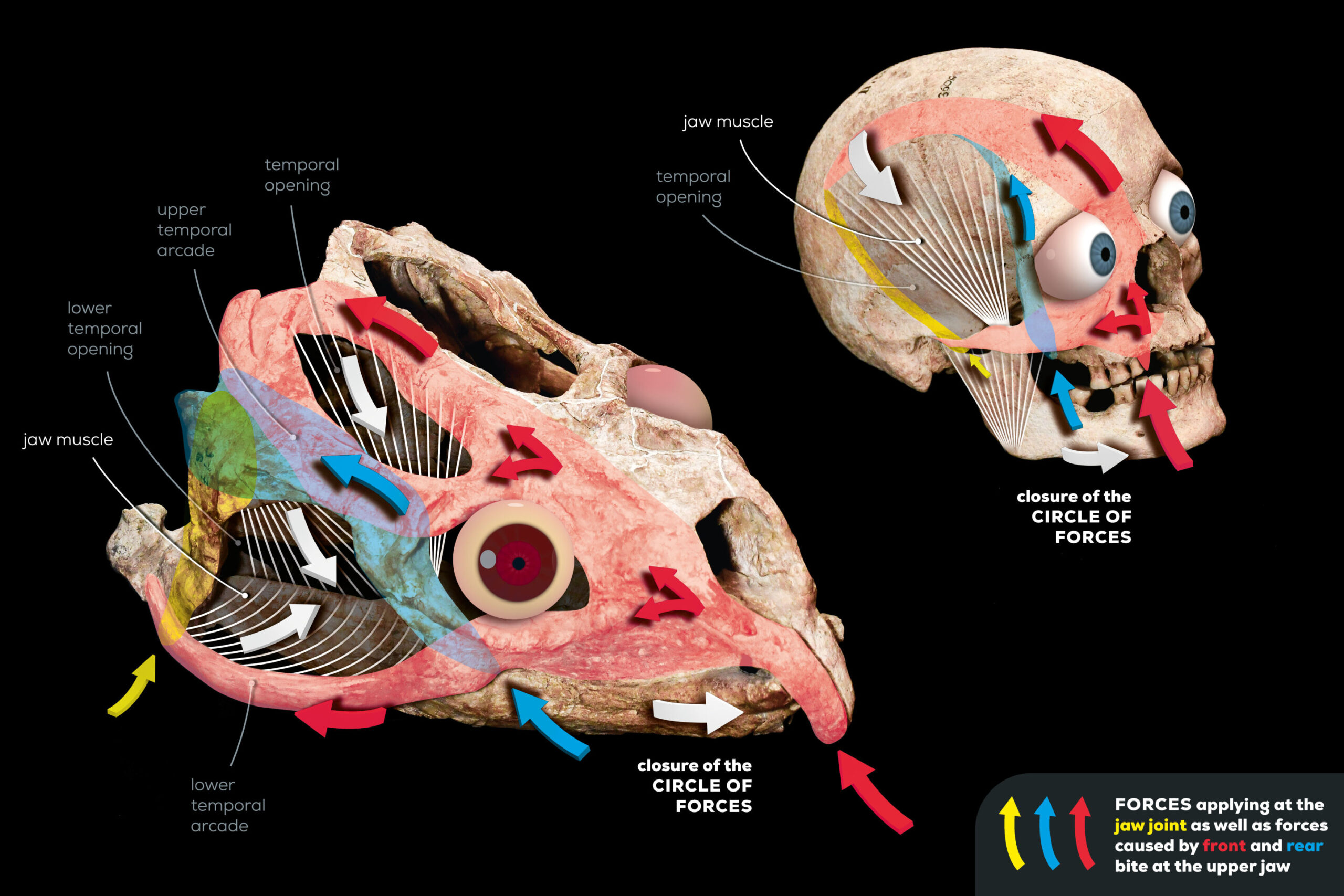For over a century, paleontologists have puzzled over a peculiar feature shared by most land vertebrates – the gaping hole in the skull known as the temporal fenestra. In reptiles, this mystery is compounded by the presence of two such openings. A new study by researchers from the University of Tübingen and Ruhr University Bochum sheds light on the evolutionary origins of these skull features, linking them to the feeding habits of various species.
The research team, led by Dr. Ingmar Werneburg and Professor Holger Preuschoft, proposes that the forces exerted during biting, chewing, and food manipulation shaped the skull over millions of years. These forces, they argue, led to the formation of bony reinforcements and openings in the temporal region of the skull.
“While the diversity of skull shapes has been meticulously documented,” explains Dr. Werneburg, “the exact reasons behind the openings and bars in the temporal region, and what they reveal about the biology and evolutionary relationships of land vertebrates, have remained elusive.”
The researchers’ model centers on the principle that bone formation primarily occurs in areas experiencing compressive stress. Conversely, areas with minimal movement, preventing the formation of false joints, are conducive to bone growth.
Humans, for instance, have a prominent temporal opening above the cheekbone. This opening allows the jaw muscle to connect to the lower jaw, and its movement can be felt during chewing by placing a hand on the temple. The study investigates how these openings differ across various fossil reptiles, including dinosaurs.
Werneburg and Preuschoft compared numerous land vertebrate skulls, spanning millions of years of evolution. Their analysis suggests that animals employing a powerful, front-of-the-jaw bite – often aided by fangs – experience significant tension across the skull, from above and below the eyes down to the neck. This tension, in turn, triggers the formation of bony braces in the temporal region.
An additional factor comes into play for reptiles, which tend to bite with greater force at the back of their jaws, where leverage is maximized. “This back-jaw bite also creates compressive stress,” explains Dr. Werneburg, “and necessitates a bony bridge behind the eye. When this bridge connects with the compressive stress zone from the front bite, it redirects some of the force, potentially leading to the formation of a second zygomatic arch.”
Professor Preuschoft’s previous research explored the impact of these forces on the skulls of living animals, even testing the breaking points of bones. The current study extends these findings to the evolutionary history of vertebrates.
The study further suggests that lateral shearing forces, generated when an animal shakes its prey or tears off leaves, contribute to additional modifications in the temporal anatomy. These forces are effectively channeled through the jaw muscles, creating a circuit that stabilizes the skull and prevents cracking.
By delving into the biomechanics of feeding, this research offers a compelling explanation for the evolution of temporal openings in land vertebrates. These openings, along with the associated bony structures, provide valuable clues about the feeding strategies and ecological niches occupied by extinct species, aiding paleontologists in reconstructing their way of life.
The research is published in The Anatomical Record journal.
